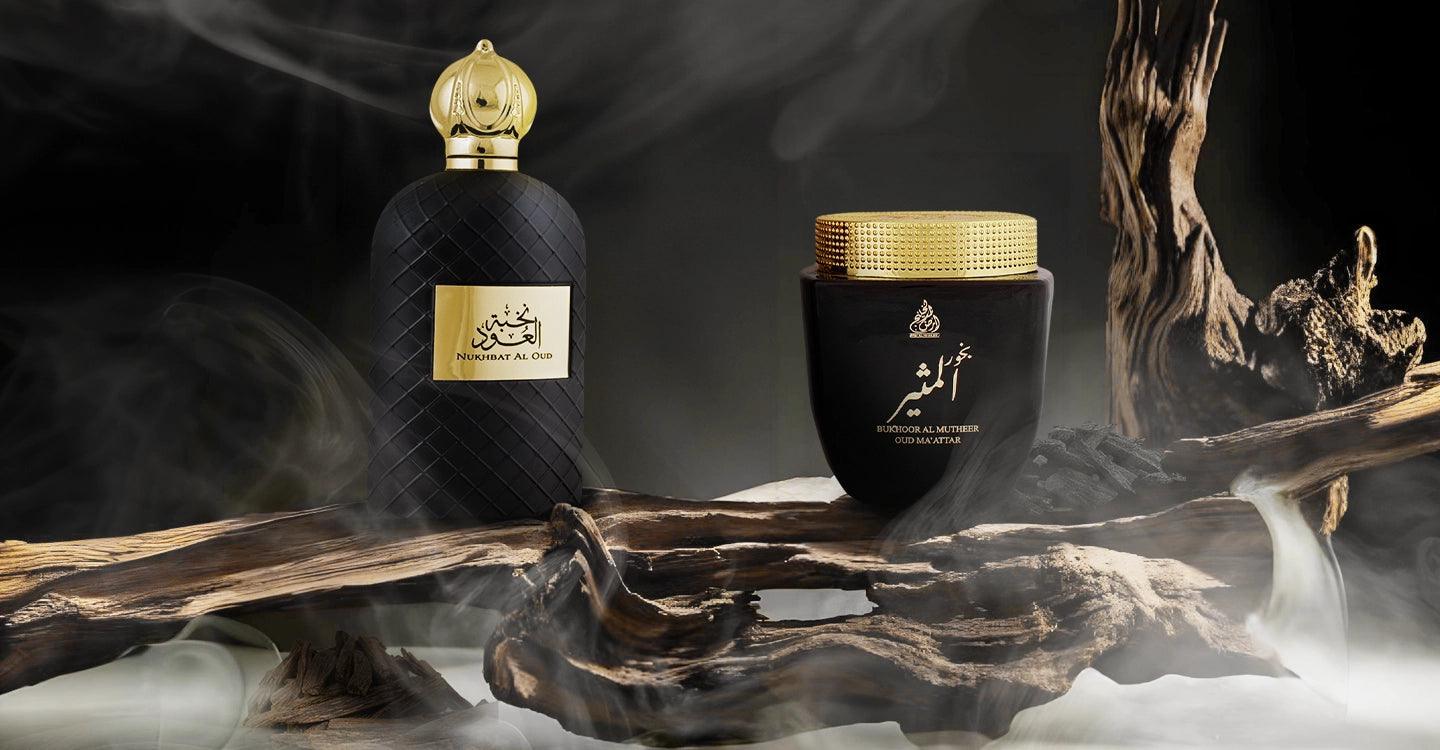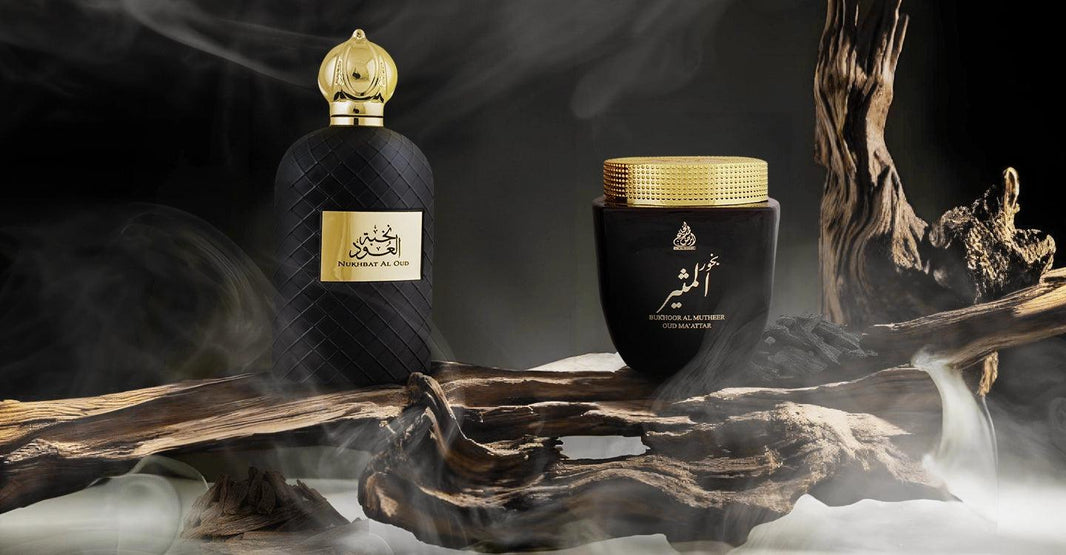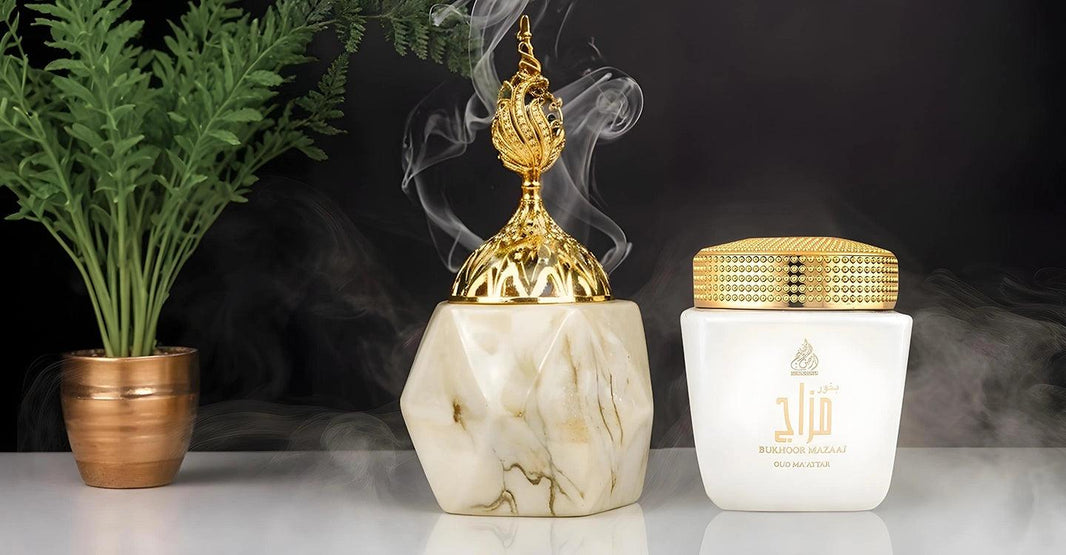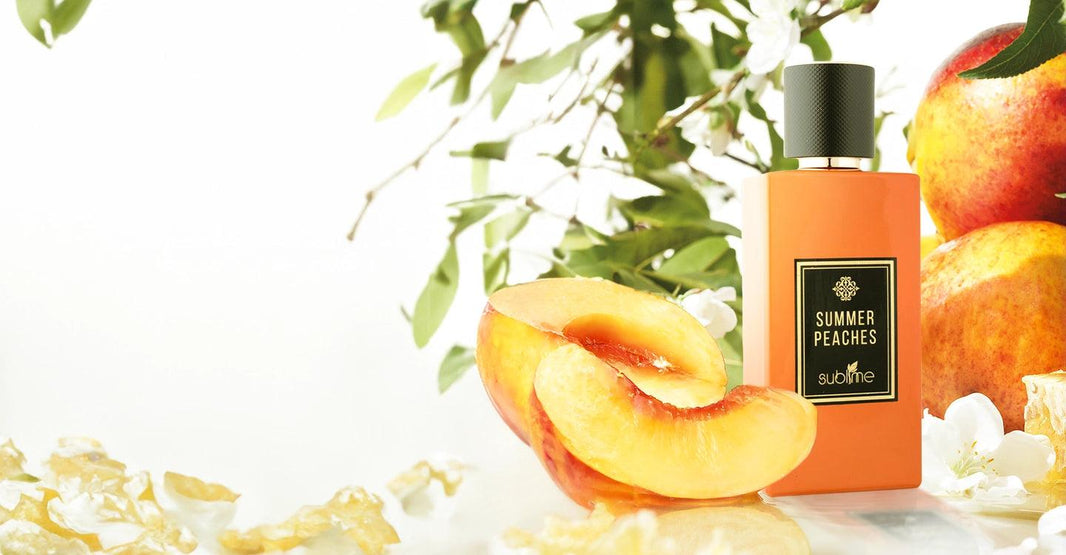Have you ever walked into a room and instantly felt captivated by the fragrance or the unique aroma of the space? Or maybe you have ever caught a whiff of someone’s perfume, and the next time you ever smell that scent, it takes you back in time to that person whose fragrance nearly intoxicated you! Fragrance has been an integral part of human culture for centuries because it involves one of our prime senses-smell. Arabian or Middle Eastern fragrances are revered worldwide because they are a testament to quality, luxury, and tradition. In the realm of enchanting scents in this region, Oud perfumes and Bukhur are two exquisite options that you cannot overlook.
In case you are wondering what the differences between these two are, here’s a guide that can help!
What is Oud?
Also known as “liquid gold” due to its rich and intoxicating scent, Oud is a highly renowned fragrance ingredient extracted from the resinous heartwood of the Agarwood tree. Native to Southeast Asia and India, the Oud oil is derived from the Agarwood tree, and it has gained popularity worldwide, especially in the Middle East.
What’s interesting here is Oud is formed when the Agarwood tree becomes infected with a certain type of mold. In response to this infection, the tree produces a dark, resinous substance, which is what we know as Oud. Typically, it takes years for the tree to develop the resin, which makes Oud perfumes rare and extremely valuable.
The Aroma of Oud
Luxury Arabian Oud perfumes have a woody, earthy, and slightly sweet fragrance. Depending on the tree’s age, region, and even the environmental factors, the fragrance profile can greatly vary. High-quality Oud oil can have layers of complexity, with deep notes of wood, spice, and even animalic undertones for a distinctive, and long-lasting fragrance.
What is Bukhur?
Bukhur refers to incense, specifically wood chips that are soaked in fragrant oils and mixed with natural ingredients, such as resin, musk, and sandalwood. Also known as Bakhoor in some regions, the wood chips in Bukhur are burned to release aromatic smoke, which is used to perfume homes, clothing, and even hair.
In the Middle Eastern and South Asian culture, burning Bukhur isn’t just about the fragrance; it’s more of a cultural and spiritual value. Burning Bukhur is quite common during gatherings and religious ceremonies, as it signifies bringing warmth and hospitality into any setting.
The Aroma of Bukhur
Bukhur typically has a floral, sweet, or spicy scent, depending on the oils and ingredients used to create it. Unlike Oud, which has a natural, singular profile, Bukhur is a blend of different fragrances, and each family or vendor may have their own recipe, which makes every batch unique. In addition, the smoky aroma also lingers long after the incense is burned, which encapsulates the space in a rich, welcoming fragrance.
The Difference Between Oud and Bukhur
Oud perfumes and Bukhur are both celebrated for their scintillating fragrance undertones. However, they are used quite differently in daily life.
Oud Usage
Premium Oud perfumes, especially in their oil form are highly concentrated, which is why even a little goes a long way. People often apply Oud on the skin as a perfume or add it to base oils in luxury fragrances. In fact, in the Middle East, both men and women apply a small amount of luxury Arabian Oud perfumes to their pulse for long-lasting fragrance. Its potency and staying prowess can make it a symbol of luxury, which is often reserved for special occasions or high-end perfumes. In addition, Oud is also used in a wide range of beauty and skincare products, from creams to hair oils for adding fragrance to products.
Bukhur Usage
Unlike Oud perfumes, Bukhur is predominantly used as an ambient fragrance. People light Bukhur during prayers, before a guest arrives, or after cleaning the house because the burning of Bukhur is considered a way to cleanse the air. In fact, the ritual itself can be a grounding and meditative experience.
Burning Bukhur requires Mabkhara, which is a traditional incense burner. Once you light the wood chips in it, the fragrant smoke can be used to perfume clothes, rooms, and even cars. Some people even walk through the smoke to let it seep into their clothes and hair, so they have a signature scent on them that lasts for hours.
Key Differences Between the Two
Now that you have looked at each of the products individually, let’s break down the key differences between the two.
- Source and Composition: Oud is derived from the Agarwood tree and it is an organic resin produced as a defense mechanism by the tree. The oil is extracted from the wood itself, making it a standalone ingredient. However, Bukhur is not a single substance, but a blend of wood chips infused with oil and other fragrant components. The scent of Bukhur can vary depending on the recipe.
- Form: Mostly oud is available in oil form, but Oud wood can also be burned just like incense, hence releasing a smoky aroma. On the other hand, Bukhur is primarily found in solid form (wood chips or blocks) that are burned to release smoke. It’s used more as an incense than a personal scent.
- Fragrance Profiles: The fragrance profiles in Oud perfumes are deeply complex, and they evolve over time on the skin. But Bukhur usually is a blend of different scents, the aroma is smoky and it lingers in the air long after burning.
- Cultural Significance: Oud is a symbol of luxury, and it is considered an exclusive product due to its rarity and cost while being cherished for personal and intimate use in perfumes. On the other hand, Bukhur is deeply embedded in cultural practices and rituals to create an inviting and sacred ambiance.






